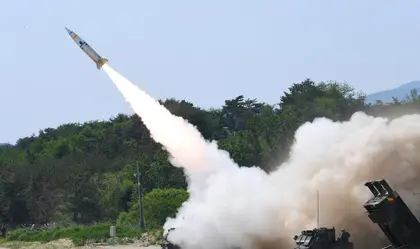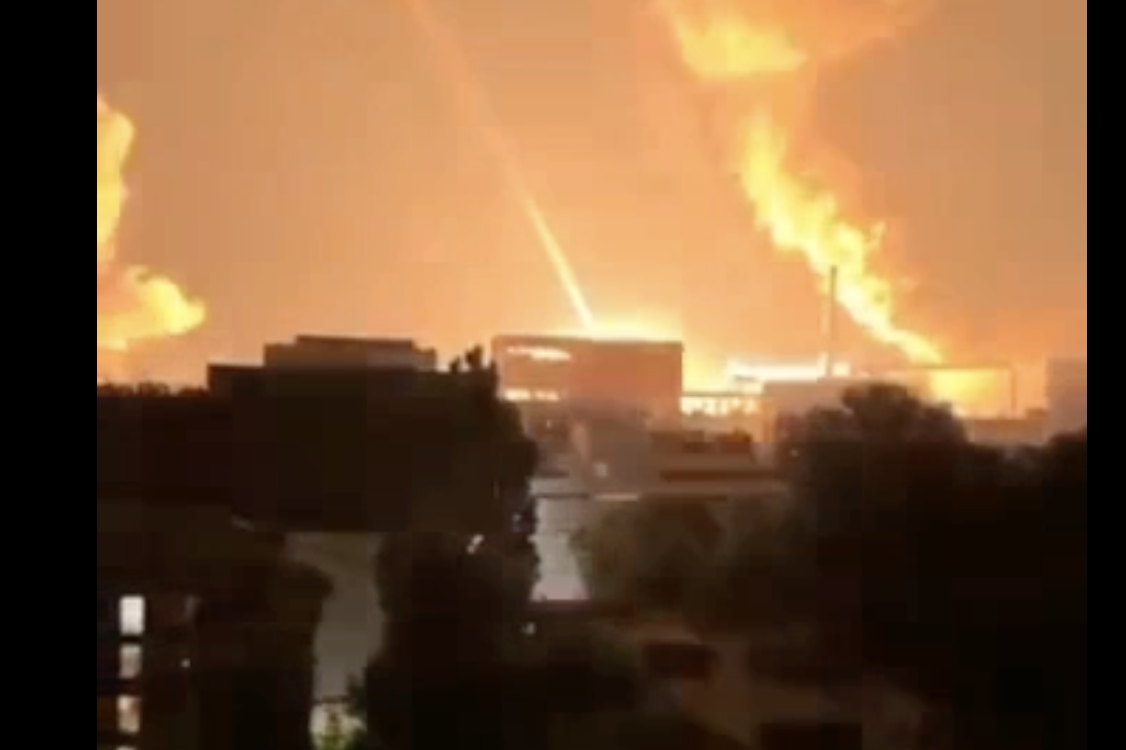The Special Operations Forces (SSO) have released a video reportedly showing SSO operators destroying Russian engineering equipment in the Kursk region, including strikes on bridges and pontoon crossings using the American High Mobility Artillery Rocket System (HIMARS).
“Where are the Russian pontoons ‘disappearing [to]’ in the Kursk Region? Special Operations Forces operators, together with units of the Defense Forces of Ukraine, are effectively destroying them,” read the caption accompanying the video.
JOIN US ON TELEGRAM
Follow our coverage of the war on the @Kyivpost_official.
The footage captures the coordinated efforts of Ukrainian fire support units and unmanned aerial systems targeting enemy positions in the Kursk region, a Ukrainian aerial scout told Kyiv Post.
He explained that aerial reconnaissance identifies the movement and stockpiling of priority targets, such as engineering structures, equipment, and ammunition depots. Once identified, fire support units, including attack UAVs and rocket launchers, deliver precise strikes.
The video also shows HIMARS strikes on bridges and cluster strikes on pontoon crossings.
“One interesting cluster strike on the crossing clearly shows the work of the adjuster, who helped hit the target twice, with a shift in the center, so that the cluster burst damaged both the equipment and the pontoon,” a Ukrainian military officer said.
“After such damage, neither the equipment nor the pontoon crossing will function properly,” he added.

Ukraine Modifies Domestic UAV Into FPV Strike Drone ‘Aircraft Carrier’
In addition to the destruction of engineering equipment, bridges, and crossings, the video also shows the Ukrainian Defense Forces destroying a cluster of Russian equipment, field ammunition, fuel depots, a radio-electronic warfare complex, and a 152-mm D-20 gun.
The aerial scout said the footage includes scenes from kamikaze drones, which maintained video signal with the control panel until impact. This, he noted, indicates the failure of Russian troops’ radio jamming efforts.
“It’s clear that as the enemy retreats, they haven’t ensured the proper function of all military systems, while the Ukrainian Armed Forces are effectively utilizing resources to cut off the Russians’ logistical routes,” the military officer told Kyiv Post.
According to him, these successful actions will likely severely demotivate the Russian army, as the advantages on their home territory are diminishing while Ukrainian advances are gaining momentum.
Satellite images from Radio Liberty confirm that the pontoon bridge placed by the Russian army across the Seim River in Kursk has disappeared. NASA FIRMS images from Aug. 19 show no trace of the bridge, while smoke, likely from an explosion, is visible 500 meters (1,640 feet) in its previous location.
The second pontoon bridge, installed by Russian troops east of the village of Glushkovo, remains intact, according to the satellite images.
The Russian army began constructing pontoon crossings over the Seim River after Ukrainian forces, advancing from the south, struck fixed bridges in the area. Since Aug. 16, Ukrainian strikes have disabled three bridges across the Seim River near the settlements of Glushkovo, Zvan, and Karyzh.
On Sunday, Ukrainian troops destroyed a crucial automotive bridge in Kursk, cutting off Russian forces and civilians in an area the size of Luxembourg from escape or reinforcements.
Between Aug. 12 and 15, Ukrainian long-range artillery units, using American GMLRS rockets, targeted a bridge near Glushkovo, approximately 8 kilometers (5 miles) east of Zvannoye. The strikes caused significant damage, and on Aug. 16, an air-launched guided bomb demolished the bridge, according to a Ukrainian Air Force representative.
On Monday, Aug. 19, President Volodymyr Zelensky announced that Ukrainian forces had gained control of over 1,250 square kilometers of territory and 92 settlements in the Kursk region.
The Ukrainian offensive in the Kursk region, launched on August 6, aimed to protect residents of Ukraine's border areas from Russian shelling and establish a buffer zone. As a result, Ukrainian troops captured dozens of settlements, including the city of Sudzha.
You can also highlight the text and press Ctrl + Enter






